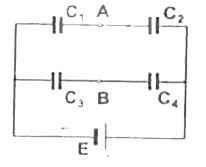Determine the potential differnece φA−φB between points A adn B of the circuit shown in Fig. Under what condition is it equal to zero ?

Video Solution
Text Solution
Make the charge distribution, as shown in the fig. In the circuit, 12561
−Δφ=0 yields
q1C4+q1C3−ξ=0 or, q1=ξC3C4C3+C4
and in the circuit 13461,
q2C2+q2C1−ξ=0 or, q2=ξC1C2C1+C2
Now φA−φB=q2C1−q1C3
=ξ[C2C1+C2−C4C3+C4]=ξ[C2C3−C1C4(C1+C2)(C3+C4)]
It becomes zero, when
(C2C3−C1C4)=0, or C1C2=C3C4

|
Updated on:21/07/2023
Topper's Solved these Questions
- BOOK - IE IRODOV, LA SENA & SS KROTOVCHAPTER - ELECTRODYNAMICSEXERCISE - Electric Current72videos
ELECTRODYNAMICS
- BOOK - IE IRODOV, LA SENA & SS KROTOVCHAPTER - ELECTRODYNAMICSEXERCISE - Constant Magnetic Fiels - Magnetics69videos
ELECTRODYNAMICS
- BOOK - IE IRODOV, LA SENA & SS KROTOVCHAPTER - ELECTRODYNAMICSEXERCISE - Conductors And Dielectrics In An Electric Field47videos
ELECTRODYNAMICS
- BOOK - IE IRODOV, LA SENA & SS KROTOVCHAPTER - ELECTRICITY AND MAGNETISMEXERCISE - All Questions6videos
ELECTRICITY AND MAGNETISM
- BOOK - IE IRODOV, LA SENA & SS KROTOVCHAPTER - ELECTROMAGNETISMEXERCISE - All Questions24videos
ELECTROMAGNETISM
Similar Questions
Knowledge Check
- Question 1 - Select One
The potential difference VA−VB between points A and B for the circuit segment shown in figure at the given instant is
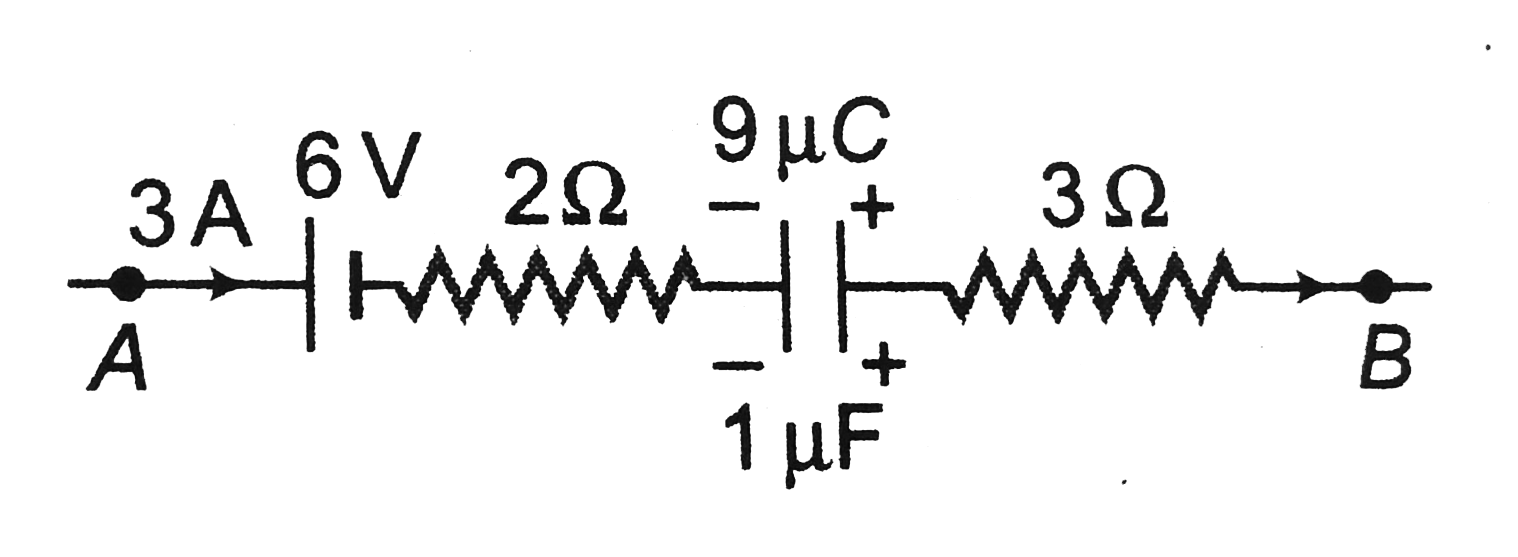 A12VB−12VC6VD−6V
A12VB−12VC6VD−6V - Question 2 - Select One
What is the potential difference between the points A and B in the circuit diagram shown in figure ?
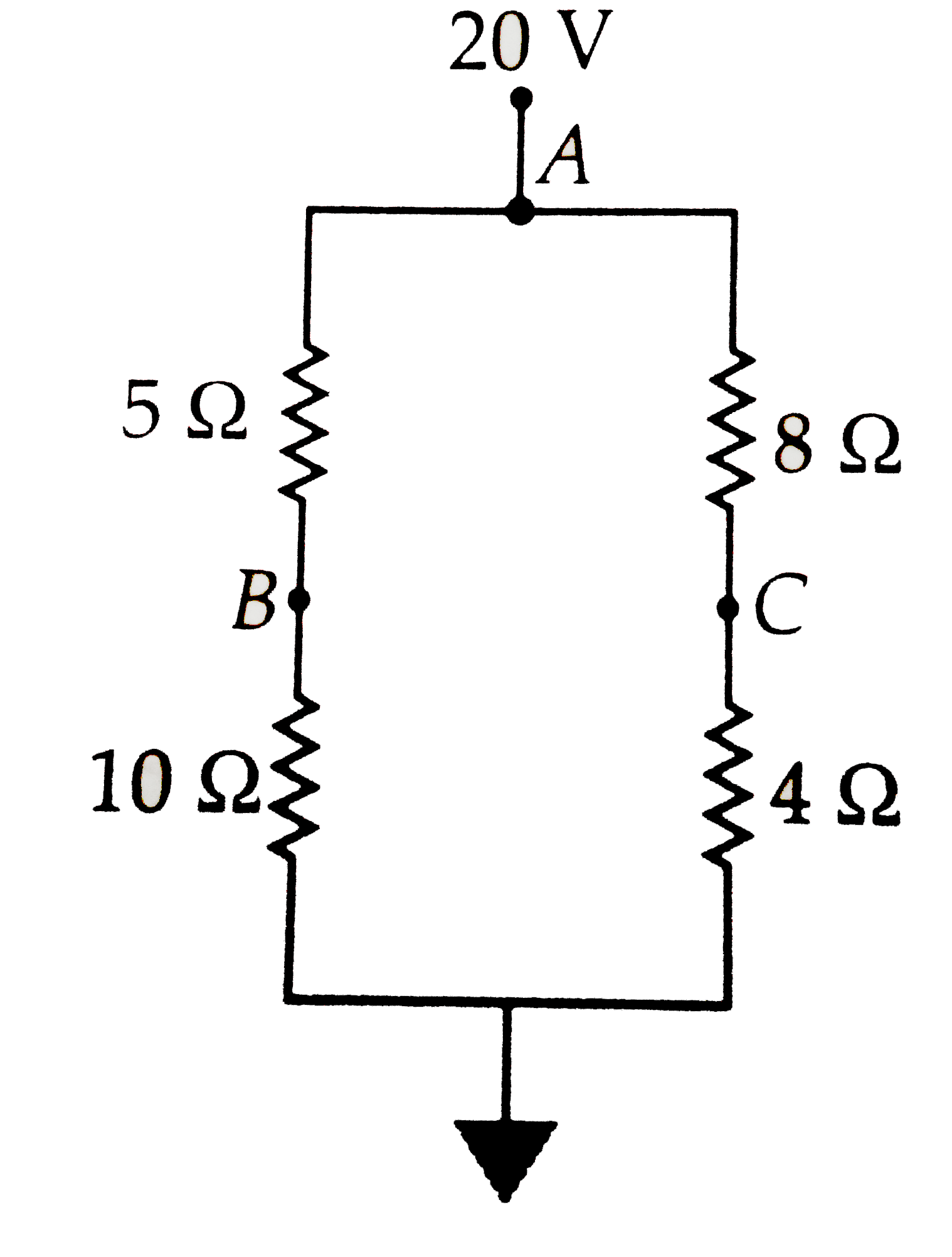 A203VB103VC20√3VD10√3V
A203VB103VC20√3VD10√3V - Question 3 - Select One
The equivalent resistance between the points A and B in A the circuit shown in Fig. is
 A3.12ΩB1.56ΩC6.24ΩD12.48Ω
A3.12ΩB1.56ΩC6.24ΩD12.48Ω
Find the resistance between points A and B of the circuit shown in Fig.
 View Solution
View SolutionFind the potential difference VA−VB between points A and B of the circuit shown in.
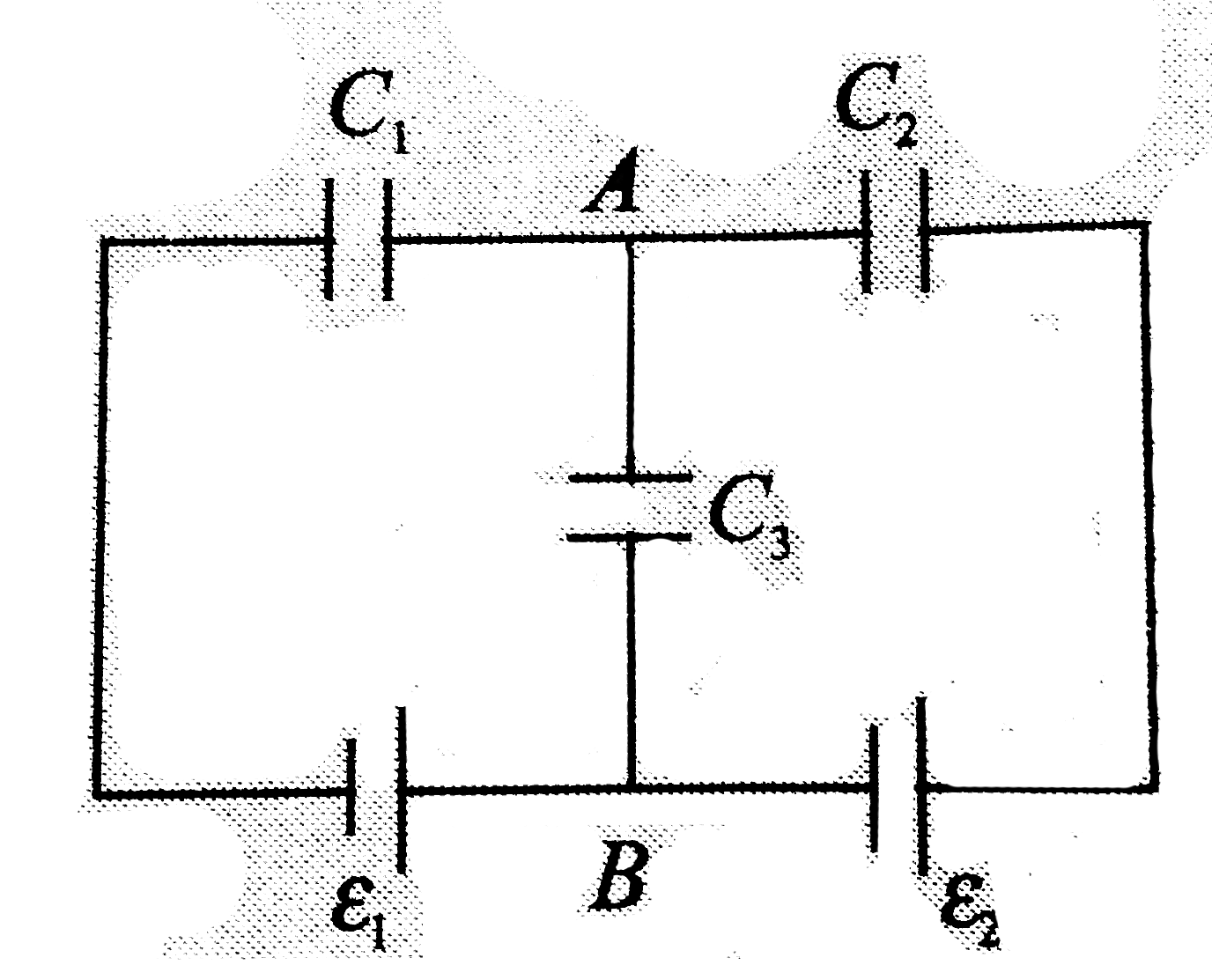 . View Solution
. View SolutionIn the circuit shown in figure four capacitors are connected to a battery. Determine the potential difference VM−VN between· points M and N of the circuit. Find the conditions under which it is equal to zero.
 View Solution
View SolutionFind a potentail difference φ1−φ2 between points 1 and 2 of the circuit shown in Fig if R11=10Ω,R2=20Ω,E1=5.0V, and E2=2.0V. The internal resisances of the current sources are negligible.
 View Solution
View SolutionFind the potential difference (inV) between points A and B shown in the circuit.
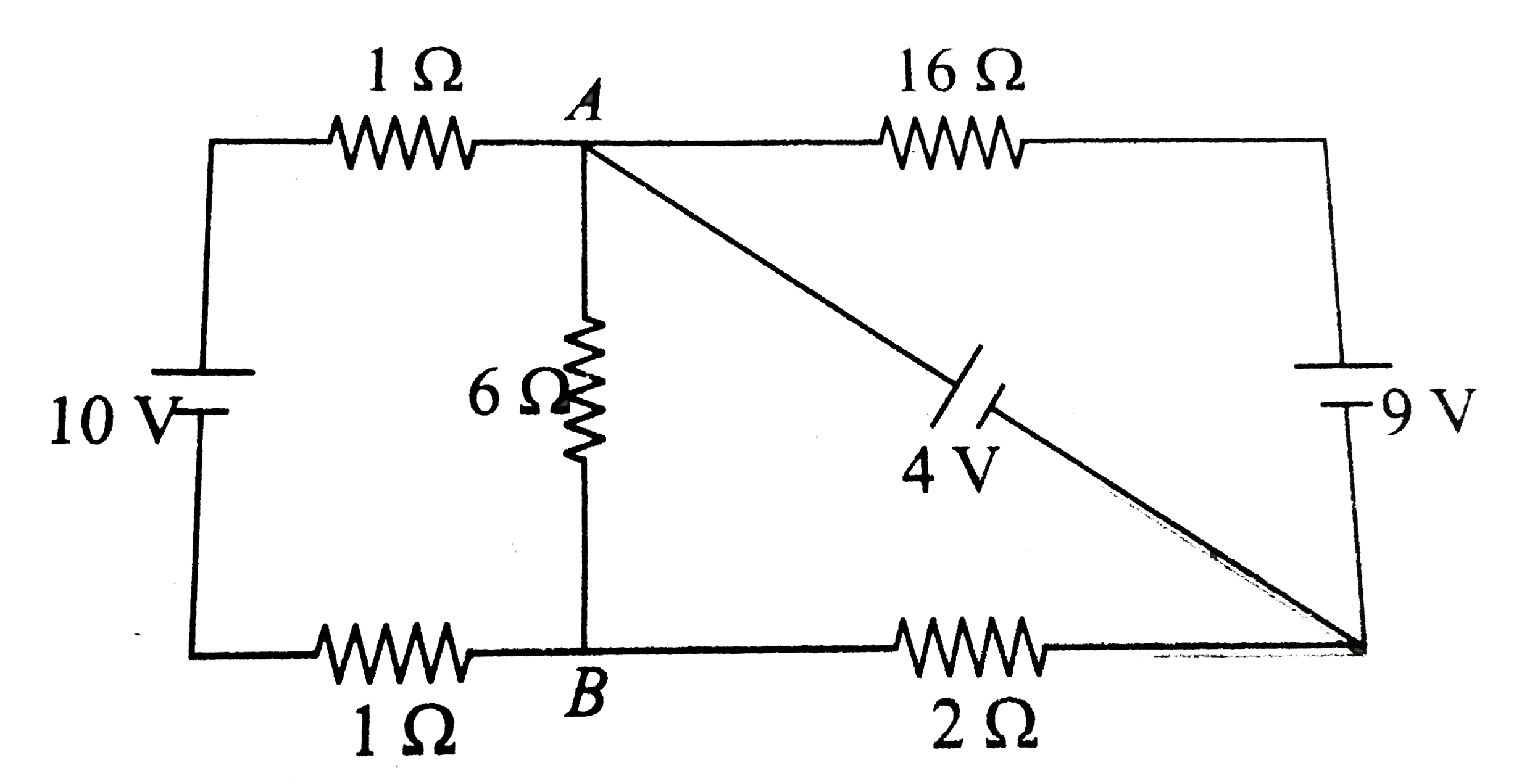 View Solution
View Solution



